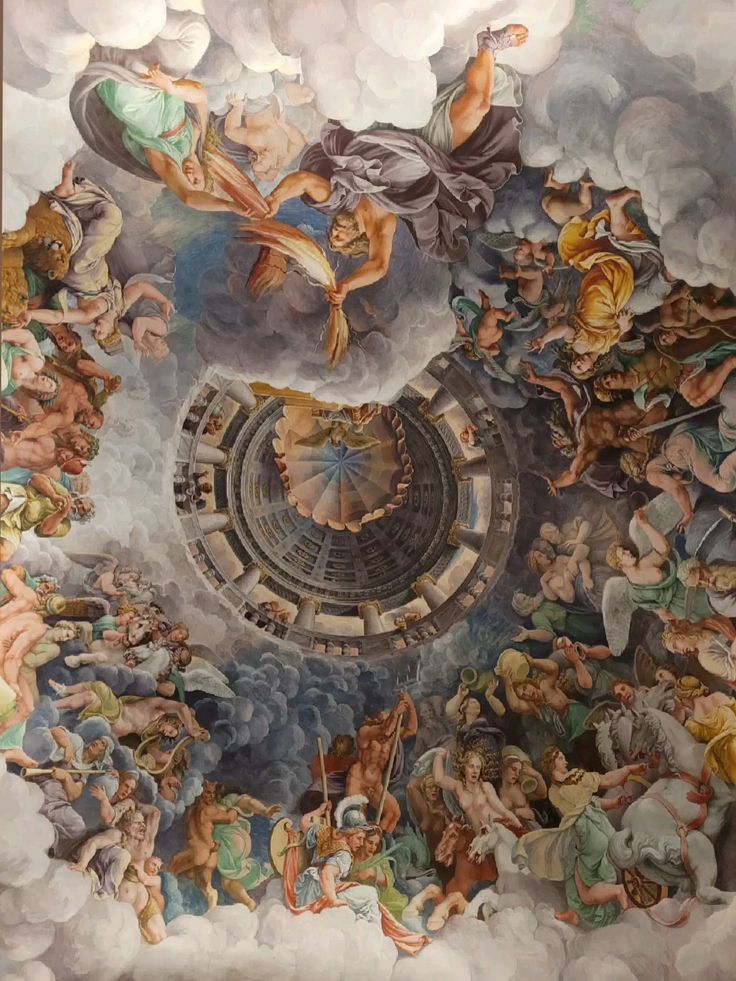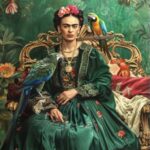Michelangelo Buonarroti: The Renaissance Genius
Michelangelo Buonarroti or Michelangelo di Lodovico Buonarroti Simoni, known simply as Michelangelo, was an Italian sculptor, painter, architect, and poet whose genius left an indelible mark on the Renaissance era and the world of art. Born on March 6, 1475, in Caprese, Italy, Michelangelo’s works have become synonymous with perfection, creativity, and enduring influence.
Early Life and Artistic Beginnings: Michelangelo Buonarroti
Michelangelo Buonarroti was born to a family of modest means in Tuscany. From an early age, he displayed an extraordinary talent for the arts, which led to his apprenticeship under Domenico Ghirlandaio, a prominent painter of the time. His apprenticeship allowed him to master the techniques of fresco painting and sculpture, laying the foundation for his future masterpieces.
By the age of 21, Michelangelo had already completed “Pietà”, a sculpture of the Virgin Mary cradling the lifeless body of Jesus. The piece was so stunning that it established his reputation as one of the greatest sculptors of his time.
Daily Life and Impacts: Michelangelo Buonarroti
Michelangelo’s daily life was one of discipline and dedication to his craft. Known for his reclusive nature, he spent countless hours immersed in his work, often neglecting his personal well-being. Despite his fame, Michelangelo preferred a simple lifestyle, living modestly and prioritizing his art above all else.
His works had an enormous impact on the cultural and artistic life of the Renaissance, setting new standards for beauty, anatomical precision, and emotional depth in art. His approach influenced countless artists, including Raphael and Bernini, shaping the trajectory of Western art.
Iconic Works of Michelangelo Buonarroti
Michelangelo’s portfolio is filled with masterpieces that continue to awe and inspire. Some of his most iconic works include:
- David (1501-1504): This colossal marble sculpture of the biblical hero David symbolizes human strength and divine beauty. Standing at 17 feet tall, it remains a testament to Michelangelo’s ability to capture the perfection of the human form.
- The Sistine Chapel Ceiling (1508-1512): Commissioned by Pope Julius II, Michelangelo painted the ceiling of the Sistine Chapel, a project that became one of the most celebrated achievements in Western art. The central panel, “The Creation of Adam,” is particularly famous, depicting God giving life to Adam with a touch.
- The Last Judgment (1536-1541): This fresco on the altar wall of the Sistine Chapel is a powerful depiction of the final judgment, showcasing Michelangelo’s mastery of anatomy and his ability to convey intense emotion.
- St. Peter’s Basilica Dome (1546-1564): As an architect, Michelangelo designed the dome of St. Peter’s Basilica in Vatican City, a feat of engineering and artistic brilliance that has inspired architects for centuries.
Interesting Facts About Michelangelo Buonarroti
- Reluctant Painter: Despite his fame as a painter, Michelangelo considered himself primarily a sculptor. He initially resisted painting the Sistine Chapel ceiling, as he viewed fresco painting as secondary to sculpture.
- Anatomical Expertise: Michelangelo secretly studied human anatomy by dissecting cadavers, which allowed him to depict the human body with unparalleled accuracy.
- Perfectionist Nature: Michelangelo often destroyed or abandoned his works if they did not meet his exacting standards. He believed art was a divine calling that demanded perfection.
- Rivalry with Leonardo da Vinci: Michelangelo and Leonardo da Vinci were contemporaries and rivals. Both artists were commissioned to paint murals in Florence’s Palazzo Vecchio, but the project was left incomplete.
- Lifelong Work Ethic: Michelangelo worked tirelessly until his death at 88, completing some of his most significant projects in his later years.
Michelangelo Buonarroti Legacy and Significance
Michelangelo’s influence on the world of art and culture is immeasurable. His work embodies the ideals of the Renaissance, combining humanistic values with divine inspiration. His masterpieces continue to inspire artists, architects, and art enthusiasts worldwide.
- Advancement of Artistic Techniques: Michelangelo revolutionized sculpture and painting, introducing techniques that heightened realism, depth, and emotional expression. His innovations laid the groundwork for modern art.
- Cultural Symbol: His sculptures and paintings have become cultural icons, representing the pinnacle of human achievement in the arts.
- Spiritual and Philosophical Impact: Michelangelo’s works often explore themes of spirituality, mortality, and the human condition, encouraging viewers to reflect on their place in the world.
FAQs About Michelangelo Buonarroti
1. What was Michelangelo’s most famous work?
Michelangelo’s most famous works include the statue of David, the Sistine Chapel ceiling, and The Last Judgment fresco.
2. Why is Michelangelo considered a Renaissance man?
Michelangelo excelled in multiple disciplines, including sculpture, painting, architecture, and poetry, embodying the Renaissance ideal of a well-rounded, multi-talented individual.
3. How did Michelangelo influence modern art?
Michelangelo’s techniques in anatomy, perspective, and emotional expression set new standards for realism and depth in art, influencing generations of artists.
4. Was Michelangelo religious?
Yes, Michelangelo’s art reflects a deep religious conviction, as seen in his numerous works inspired by biblical themes.
5. Where can you see Michelangelo’s works today?
Michelangelo’s works are displayed in various locations, including the Vatican, Florence’s Accademia Gallery, and St. Peter’s Basilica.
Significance of Michelangelo Buonarroti in Society
Michelangelo’s work transcends time, inspiring people to appreciate the beauty of human creativity and the divine. His relentless pursuit of perfection serves as a reminder that dedication and passion can lead to extraordinary achievements. His art encourages reflection on universal themes, making him a timeless figure whose contributions to society remain invaluable.
Michelangelo’s legacy is not just his art but also the inspiration he provides for those who aspire to greatness. His life story and creations demonstrate the boundless potential of the human spirit, reminding us of our ability to create, inspire, and endure.










